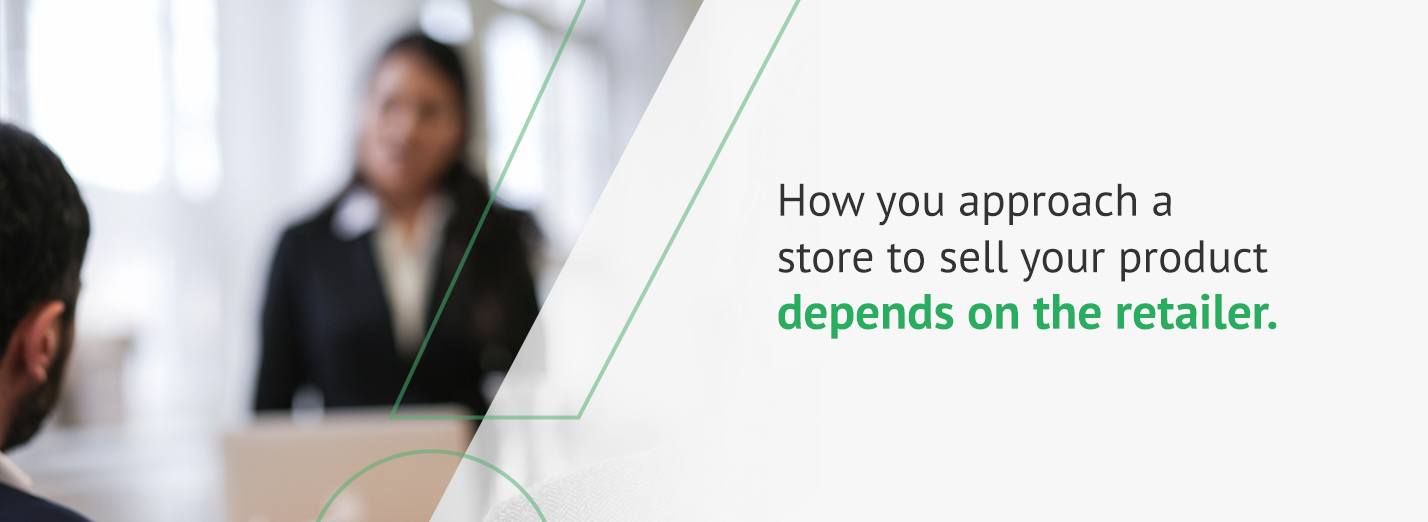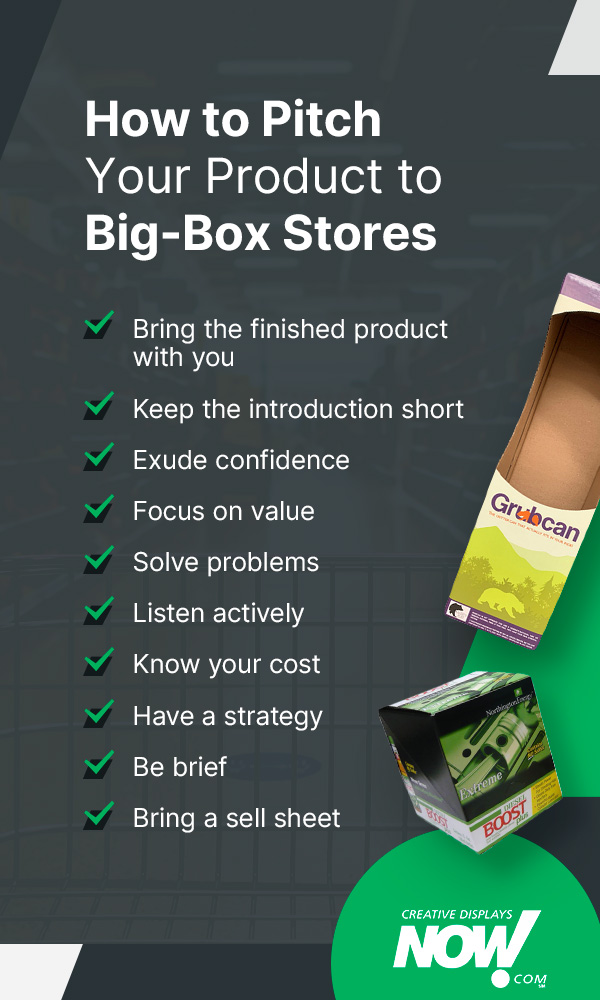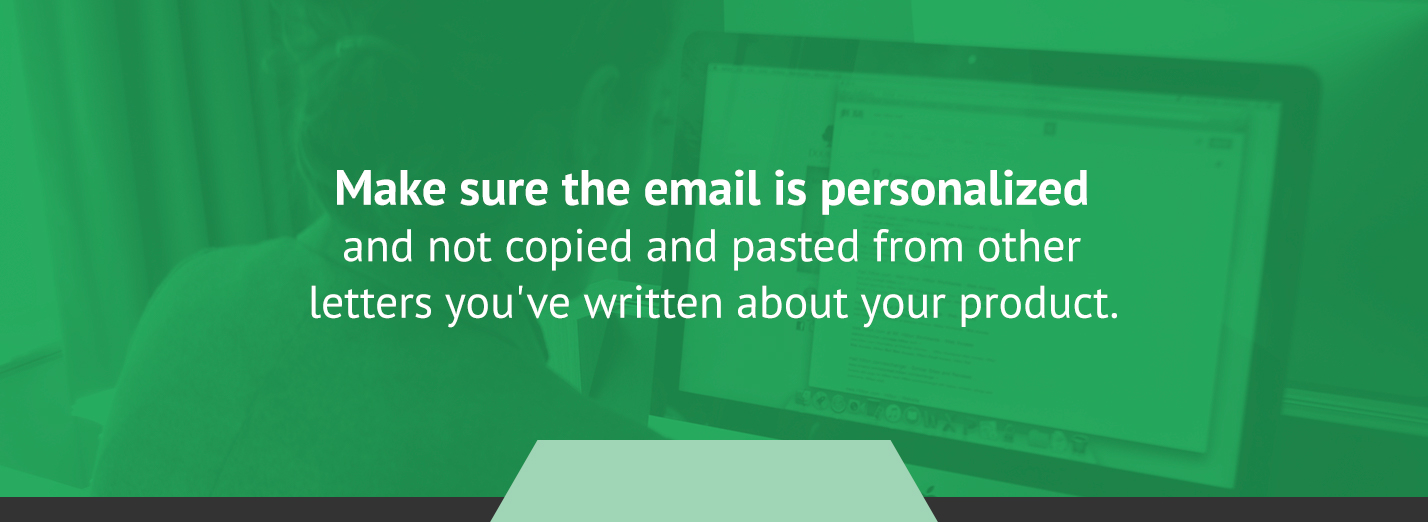Chapter 4: How to Approach Retail Stores to Sell Your Product
How you approach a store to sell your product mainly depends on the retailer. As discussed in the previous chapter, different stores have different supplier requirements. If a buyer decides they want to meet with you after reviewing your application or company information, you’ll likely need to prepare a pitch to demonstrate your product’s value.
Approaching stores to sell your product can seem nerve-wracking, but if you’re well-prepared, you can get the job done with confidence. This chapter will share tips for creating a compelling pitch and show you how to approach retail stores to sell your product effectively.
How to Pitch Your Product to Big-Box Stores and Sell to Retailers
A pitch is a short presentation where you showcase your product, demonstrate its uniqueness and persuade buyers to believe in it as much as you do. It takes passion to deliver a powerful pitch, but if you’re an entrepreneur with a product you’re proud of, it’s something you can handle.
If you want to sell to retailers and dazzle buyers from the get-go, follow these tips for a winning pitch:
- Bring the finished product with you: It’s crucial to bring complete product samples with you so buyers can see the packaging and experience the product firsthand. Consider bringing an eye-catching display as well so buyers can easily envision your product in their store.
- Keep the introduction short: Buyers want to know how your product will add value to their customers’ lives and bring profit to their store. There’s no need to go into depth about your company’s background when you start your pitch. A brief company summary is all right, but keep in mind that buyers have probably already researched your company.
- Exude confidence: Show buyers you believe in your product by saying it “will” accomplish something, rather than you “hope” it will produce the desired results. Buyers are attracted to confidence.
- Focus on value: Focus on the value of your product and not the price. If your product has value, price is less of a concern.
- Solve problems: Ensure your product solves real problems and be ready to explain how your merchandise will enhance customers’ lives. Show potential buyers you’ve done market research.
- Listen actively: Be an active listener and prepare to address concerns a buyer might have. Make sure you respond carefully. Buyers want to see you’re interested in their goals.
- Know your cost: Offer your best price from the start so buyers can feel a sense of trust with you right away. If the price is too high, you risk losing their interest.
- Have a strategy: Be ready to explain how and where your product will fit into the store and be prepared to give placement recommendations. That means you’ll need to spend time in the buyer’s store before you present your product.
- Be brief: Ensure the pitch itself is brief, or around five minutes long, to leave time for questions and keep buyers engaged.
- Bring a sell sheet: Leave a product sell sheet with the buyer. The sell sheet should look professional and feature colorful images, product specifications and benefits.
Do you need a striking product display to help your pitch? If so, reach out to us at Creative Displays Now.
How to Write a Letter to Sell Your Product
Besides meeting a retailer’s application requirements, you might write a letter or email to help you get your product in stores. The email can be a way to pitch your product before the buyer meets you in person.
You might also use an email or letter to connect with local retailers and pitch your product before you try to get into big-box stores. As mentioned in Chapter 2, big-box stores want items that are already popular, so selling through a smaller retailer first can help you build demand.
If you’d like to grab a buyer’s attention through the written word, make sure your email is personalized and not copied and pasted from other letters you’ve written about your product. Here’s a sample letter to help you get your products into stores:
- If you’re sending an email, start with a subject line that succinctly describes your product.
- Next, greet the buyer by their first name.
- Briefly state why you appreciate their store.
- Introduce yourself and include your company’s name and the product you make.
- State you’d love to be a supplier for the store and quickly describe why you think their customers will enjoy your product.
- Ask to set up a meeting or for permission to send samples.
- Write that you’ve included a sales sheet, press clippings or a link to a product video.
- Conclude by reminding the buyer why you’re contacting them and how your product will benefit their store.
- Add your contact information such as your name, brand name and website address.
- Be sure to attach images of your product.
Overall, your letter should be straightforward, error-free and as personalized as possible. Remember to send a follow-up email or letter about a week later.
How to Follow Up
If you’ve met with a buyer and pitched your product, you’ve taken a big step toward understanding how to get stores to sell it, but it isn’t over yet. After the pitch, ensure you follow up in a week or two if you haven’t heard back from the buyer. You can use your follow-up email to address any questions the buyer might still have. It’s also another chance for you to remind the buyer of your product’s value.
If you send a follow-up email, keep it brief, friendly and easy to read. In other words, try to keep the message of the email no more than five sentences long.
As an example, imagine you gave samples of your product to a potential buyer during your pitch. If you don’t hear from the buyer in a couple of weeks, you might ask them if they’ve had a chance to sample your product. Then, ask if you can answer any questions for them, and close with your contact information.
Besides emailing follow-up messages after your pitch, consider sending company updates to buyers at least once a quarter. By keeping buyers in the loop, you can nurture the connections.
Table of Contents
- How to Get Your Product Into Big-Box Stores
- Chapter 1: Why Market Your Products in Big-Box Stores?
- Chapter 2: How to Market Your Product to Retailers
- Chapter 3: Find the Right Big-Box Store for Your Products
- Chapter 4: How to Approach Retail Stores to Sell Your Product
- Chapter 5: Get Your Products in Stores With Custom Displays



